Booker T. Washington
Professor Diana Schaub reviews the life and views of Booker T. Washington, contrasting Washington's policy of gradualism to the views of abolitionist and civil rights spokesperson Frederick Douglass.
Link dead.
Professor Diana Schaub reviews the life and views of Booker T. Washington, contrasting Washington's policy of gradualism to the views of abolitionist and civil rights spokesperson Frederick Douglass.
Link dead.
Professor David Tucker looks at the views of religion, government, and the ideal American citizen and way of life presented in early 20th-century writing and contrasts them with the views on the same subjects held by the Founding Fathers. He uses writing by the authors Flannery O'Connor (19251964), Herbert Croly (18691930), and Howard W. Kellog.
Professor Christopher Flannery looks at the autobiography of novelist, journalist, historian, and academic Henry Adams (18381918). Flannery focuses on what it says about the "American character" and how Adams saw it changing at the turn of the century.
This Electronic Field Trip looks at pioneering women baseball players, owners, umpires, and teams from as early as 1866, all the way up to present day women playing and working in baseball. The common thread running through the stories examined is the efforts of women and girls to be a part of America's national pastime: baseball.
Many Americans are surprised to learn that women once played professional baseball in the All-American Girls Professional Baseball League (AAGPBL), from 19431954. Founded by Chicago Cubs owner Phil Wrigley as a method to entertain Americans and keep ball parks full during World War II, the league provided an unprecedented opportunity for young women to play professional baseball, see the country, and aspire to careers beyond the traditional female roles of teacher, secretary, nurse, librarian, or housewife.
This entry is a repeat of node #19119.
From the Chicago History Museum website:
"This two-part series delves into the history of Chicago's Great Migration through compelling historical-fiction short stories based on the Museum's collection.
"Go in-depth into two stories A Bronzeville Story (elementary) and It's a Long Way from Home (middle and high school). Participate in an interactive workshop using the unit plans for each story. Enjoy time in the Museum's galleries."
NOTE: This entry is for part one of the seminar only. To view information on part two, refer to this entry. For more on the Chicago History Museum, refer to NHEC's Museums and Historic Sites listing.
From the Chicago History Museum website:
"This two-part series delves into the history of Chicago's Great Migration through compelling historical-fiction short stories based on the Museum's collection.
"Tour the historic neighborhood of Bronzeville, the center of the Great Migration in Chicago."
NOTE: This entry is for part one of the seminar only. To view information on part two, refer to this entry. For more on the Chicago History Museum, refer to NHEC's Museums and Historic Sites listing.
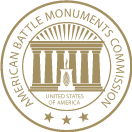
This American Battle Monuments Commission (ABMC) Burials and Memorializations database features over 224,000 records of individuals buried or memorialized in ABMC cemeteries and memorials worldwide. Covering 24 cemeteries in 10 foreign countries and 3 additional memorials in the U.S., this database provides online access to burial information of those killed in action primarily during World War I, World War II, the Korean War, and the Vietnam War.
Additional individuals include veterans, active duty military, and civilians. The database also provides information on individuals in the Corozal American Cemetery (Panama) and the Mexico City National Cemetery (Mexico), including civilians and veterans of the Spanish-American War and the Civil War.
The database interface allows students to search by name, war or conflict, service or serial number, branch of service, unit, service entry location, cemetery/memorial, date of death, and keyword. Users can also search for service members who are missing in action and Medal of Honor recipients who are buried or memorialized by ABMC.
This organization of the material allows the user to explore a wealth of information. Students can research the geographic distribution of burials or explore representation among military branches in individual cemeteries. The ABMC database allows users to focus on who is buried and memorialized and to explore the experiences of individual soldiers as well as patterns and commonalities.
Students, for example, could begin to explore the number of women who served as nurses during World War I and the Influenza epidemic of 1918, or the experiences of the 100th Infantry Battalion of the U.S. Army during World War II. Or they could chose to search for an individual from their home state or community and use the database’s information as a starting point to research the life of this individual. They can download search results and print, email, or share individual records.
This valuable research and teaching resource is accompanied by a robust “Education Resources” section featuring interactive timelines and campaign narratives, cemetery or memorial-specific mobile apps, publications, videos, lesson plans, and curriculum ideas. The “Flying Yanks: American Airmen in WWI” interactive, for example, provides historical background for students exploring the air war in WWI, a timeline and map with primary sources, as well as individual stories of airmen.
Students can use the database in conjunction with the learning materials to enrich their understanding of U.S. military history, memorialization, public history, and numerous other historical topics.
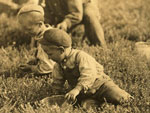
What was farm life like for a girl in the late 19th and early 20th century? What was life like for the children of Ulysses Grant at Hardscrabble Farm? Where can I find historical information about women and their roles within the community—maintaining communication, family safety, and home and farm while husbands were gone?
Children today may be struck by ways in which their own lives contrast with those of farm children’s in earlier times. One difference is the extent to which girls and boys, from a very early age, were given hard work that was essential to the running of the farm and to the economic success of the entire family. On the other hand, children today might be surprised by how independently children in times past ranged in work and play, far from immediate adult supervision, protection, and surveillance. This was true, not just on the farm, but in towns and cities as well.
Farms were—and are—vastly different from one another in very many ways, depending on their size, location, the financial resources of the owners, the ethnic background and education of the families who worked the land, and other factors. So I can only offer a few very tentative places where you might begin your reading.
Laura Ingalls Wilder’s Little House on the Prairie series, although fictionalized, provides a good idea of her life growing up on a farm in the Midwest in the second half of the 19th century. An interview that a Works Progress Administration writer did in 1938 with Nettie Spencer colorfully describes her pioneer rural childhood in the 1870s in Oregon. The website of Old Sturbridge Village provides a short essay that includes a useful description of how girls’ and boys’ lives were integrated into the work of their families’ farms, including which jobs on the farm girls and boys were typically expected to do. On children’s education in the 19th century, Pat Pflieger’s website on 19th-century American children and what they read offers plenty of primary sources—articles, book selections, children’s scrapbooks, and photos—from the time.
Ulysses and Julia Grant received from Julia’s family as a wedding gift an 80-acre plot of land not far from St. Louis. Grant and some of his friends erected a two-story rustic cabin on the land in 1856. When it was finished, he ruefully named it “Hardscrabble,” and the Grants moved in with their children—Fred, who was six years old; Buck, who was four; and Nellie, who was one year old. Grant, along with slaves whom he and Julia owned, attempted to develop the land and also helped manage and work his in-laws’ farm, White Haven, nearby by growing potatoes, wheat, and other vegetables, tending a fruit orchard, and cutting and cording wood.
The Grants only lived in the Hardscrabble cabin for a short while. When Julia’s mother died and their fourth child, Jesse, was born in 1858, the Grants moved out and took a small house in St. Louis, where Ulysses worked at various jobs. Consequently, the Grants’ children were all really too young during the family’s stay at Hardscrabble to have done many chores.
In 1982, two books were published almost simultaneously that shaped many people’s ideas about 19th-century women on the farm. They were Lillian Schlissel’s Women’s Diaries of the Westward Journey and Joanna Stratton’s Pioneer Women: Voices from the Kansas Frontier. Together, they give the impression that the lives of farm women were ones of extreme hardship, isolation, and degradation. However, Amy Mattson Lauters’ 2009 book, More Than a Farmer’s Wife: Voices of American Farm Women, 1910-1960, tells a different story in which farm women thrived, happily independent of the city, and “saw farming as an opportunity to be full partners with their husbands and considered themselves businesswomen central to the success of their farms.” Lauter considers evidence from interviews, but also from the many journals and magazines that farmers and their wives subscribed to, such as American Agriculturalist, New England Farmer, Southern Cultivator, and The Farmer’s Wife (many issues of these magazines, back into the 19th century, are available online at Google Books). An interesting letter from “A Lady”—clearly a farmer’s wife—was published in The New England Farmer in 1852. She wrote:
But there are those who sincerely believe, that no class of women in this country, do work so hard as the farmer’s wives. That circumstances often require this, it is useless to deny. But that a woman is constantly to work, and have no leisure, because she is a farmer’s wife, I do deny. A man who owns a small farm, is not required to hire much help, so that the labor of his wife is not very great. One who owns a larger one, and is required to hire help “out of doors,” if he manages as he ought, with economy and skill, will also be able to hire all needful assistance “in doors.” Where a man owns a large farm and is still unable to hire all needful help for his wife, we infer that there is an exception, and is not the general rule. Bad management, an avaricious disposition, or anything which tends to increase the burden of the wife, are wrong management somewhere, and this makes not necessarily the result of tilling the soil, but these same habits and traits of character would exhibit themselves in any other situation in life, and of course the result would be the same.
The correspondent had been moved to write her letter after she overheard two women from the city disparage one of their friends for having married a farmer.
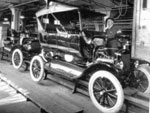
What pushes and pulls people into new ways of life? In this lesson, students use artifacts, documents, and photographs to help them answer this question.
The Henry Ford Museum’s "Early 20th Century Migration—Transportation: Past, Present and Future" is a thematically rich teaching unit. Through artifacts, documents and photographs, students explore the overarching question, What pushes and pulls people into new ways of life? How did the lure of jobs in U.S. factories “pull” Europeans and people of the American South to northern cities and new ways of living? The lessons are both rigorous and relevant, and continuously engage students in considering the impact of the past on the present.
Dubbed an Educator DigiKit, the unit includes extensive materials for teachers. The Teacher’s Guide includes timelines on various historic themes relevant to the lesson topics, a glossary, bibliographies, connections to Michigan and national standards, and field trip suggestions. The lesson plans introduce the assembly line concept, technological and economic forces that cause large-scale migration, fair labor issues, challenges faced by immigrants, and the ongoing changing nature of work up to the present. All of the lessons include links to primary sources in the Henry Ford Museum Online Collection and they utilize a range of activities, including simulations, math-based problem solving, and source analysis.
Teachers will want to consider supplementing this unit by incorporating a rigorous, systematic approach to analyzing primary sources. Borrowing one from another site (see possibilities here) could strengthen the individual lessons and unit. A rich resource, 20th Century Migration honors middle elementary children by challenging them to ponder and interpret significant topics in history that continue to affect their world today.

Yes
Not only are the details accurate, but the breadth of the perspectives in the lessons helps students develop an accurately complex sense of the unit topics.
Yes
Brief secondary sources provide context for the investigations. For examples, see an essay on the nature of assembly line work on page 44, or a PowerPoint on urbanization that is linked from pages 36 or 37.
Yes
Includes a few explicit writing exercises, primarily short-answer assessments. Class discussion questions might be used as writing prompts in older grade levels.
For an example, see writing prompts for primary source analysis on page 55.
Yes
Would have liked to see primary source analysis embedded earlier in the unit; it is not introduced until near the end of the unit. The unit would also be more powerful if it introduced a systematic model for source analysis.
No
The source analysis guides do not ask students to consider the author or creator of a source. The informal mini-biographies used as primary sources in Lesson 6 are intriguing; the lesson would help students better understand the nature of historical analysis if they engaged them in asking who created the biographies and why.
Yes
The lessons lend themselves to ready adaptation not only in grades 3-5, but for middle school as well.
Yes
Yes
Topical knowledge is emphasized in the unit. Nonetheless, the unit does include activities to engage children in interpreting historical documents for basic understanding. No criteria for assessment are included.
Yes
The learning goals are topical.
Yes
The learning goals are topical.
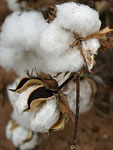
Students listen to excerpts of oral histories from former cotton mill workers, who discuss their reasons for joining (or not joining) the labor union. Students discuss these sources, and take a stand for or against joining the labor union in early 20th century cotton mills.
In this lesson, students use oral histories to consider workers’ motivations (and reluctances) about joining labor unions in the cotton mills of North and South Carolina in the early 20th century. The website provides both audio recordings and transcripts of the oral history excerpts, allowing students multiple access points to the content.
The lesson introduces oral history as primary source and can be used to help structure class activities where students will gather oral histories. The website provides additional ideas for using these primary sources in an online guide to oral histories in the classroom. The brief excerpts (and accompanying background information) included here present challenges faced by cotton mill laborers, as well as concerns over the possible consequences of unionization. Peoples’ reasons both for and against union involvement are included. In this way the lesson illustrates contrasting perceptions on unionization and the necessity to look for varied perspectives when conducting historical research.
Students, in groups, write a speech about the merits of joining (or not joining) the union. We suggest that teachers be explicit that this speech be composed as if addressing this early 20th-century audience, and ensure that students have sufficient background knowledge about the specific historical circumstances to construct a realistic speech. Asking students to consider how similar or different the stated concerns are to those of modern-day workers confronted with a similar choice may help with illuminating historical context, as will additional background information. Teachers could also add a “context checker” to group roles to ensure this is taken into account.
The short, contrasting oral history excerpts included make this lesson a good way to introduce oral history and show its usefulness to understanding the past as well as to learning more about the labor movement.
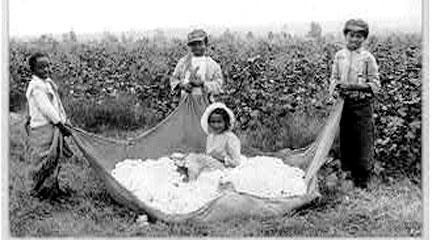
Yes
Yes
In addition to background information on the subjects of the oral histories included on the right-hand column of the lesson page, the site also includes additional helpful resources (under “related topics”) on cotton mills and labor unions.
Yes
Written transcripts are provided for the oral histories, and students are asked to write speeches defending or opposing unionization in the cotton mills.
Yes
Yes
Students will need to closely analyze each oral history to identify a worker’s reasons for or against joining the union.
Yes
Yes
While discussion questions are included for each document, teachers may want to provide additional support for struggling readers and English Language Learners.
No
Although the lesson does not provide specific criteria, teachers can use the persuasive speech at the end of the lesson (Activity 4) as an assessment. Constructing criteria that include attention to historical context is likely necessary.
Yes
Yes